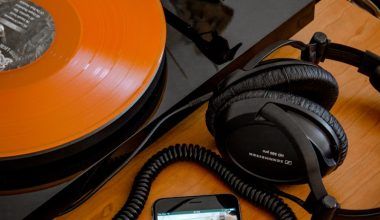If you’ve ever wondered why professional songs sound so clear and balanced, it’s because of mixing and mastering audio.(what is mixing and mastering audio) These two processes are what make your music go from rough and raw to polished and perfect.
Imagine your song as a messy room. Mixing is like organizing everything in the room so it looks neat. Mastering is like giving the room a fresh coat of paint and making it ready to show off to guests.
In this guide, we’ll explain mixing and mastering in the simplest way possible so that anyone can understand it. Whether you’re a musician, producer, or just curious, this guide is for you!
What is Mixing?
Mixing is the process of blending all the sounds in a song together. Think about a band—there’s the singer, drums, guitar, keyboard, and maybe even a violin. When you record all these sounds, they don’t magically sound perfect together. This is where mixing comes in.
Why is Mixing Important?
When you mix a song, you make sure:
- The singer’s voice (vocals) is clear and not hidden behind loud instruments.
- Each instrument has its own space to shine.
- The overall song feels balanced and pleasant to listen to.
How Does Mixing Work?
Here’s what a mixing engineer usually does:
- Adjust Volume Levels: Making sure nothing is too loud or too soft.
- Pan the Sounds: Moving sounds to the left or right ear for a stereo effect.
- Add Effects: Using reverb (echo), delay, or other effects to make the song sound lively.
- Equalize (EQ): Cleaning up unwanted sounds, like removing a deep rumble from the guitar.
Imagine mixing as cooking a dish. Each ingredient (vocals, drums, etc.) needs to be added in the right amount to make it taste (or sound) perfect.
What is Mastering?
Mastering is the next step after mixing. Once the song is mixed, mastering gives it the final polish. It’s like wrapping a gift after you’ve carefully picked out the present.
Why is Mastering Important?
Mastering ensures:
- Your song sounds good on all devices—headphones, speakers, or even car stereos.
- The loudness is just right—not too quiet or too overwhelming.
- All songs in an album sound consistent.
How Does Mastering Work?
Here’s what happens during mastering:
- Balancing Frequencies: Ensuring bass, midrange, and treble are balanced.
- Adding Loudness: Using tools to make the song loud but not distorted.
- Preparing for Release: Formatting the song for streaming platforms like Spotify or YouTube.
If mixing is organizing the messy room, mastering is polishing the floor and putting up decorations.
Why Do Mixing and Mastering Matter?
Without these two steps, even the best song can sound dull or messy. Mixing and mastering:
- Make the vocals clear and powerful.
- Ensure all instruments sound good together.
- Help your music stand out professionally.
Let’s say you release a song without mastering it. It might sound amazing on your headphones but flat or too quiet on someone else’s speakers. Mastering fixes this.
The Step-by-Step Process of Mixin
Here’s a simple guide to how mixing works:
1. Organize Your Tracks
Before you start, name each track (like vocals, drums, bass) and color-code them. This makes it easier to find things.
2. Balance the Volume
Start by adjusting the volume of each track. Make sure the drums and vocals are at the center of attention.
3. Use Equalization (EQ)
This is like cleaning up each instrument. For example:
- Remove low rumbles from vocals.
- Brighten the guitar by boosting the high frequencies.
4. Add Effects
Effects like reverb can make a vocal sound like it’s in a big room. Use effects sparingly so they enhance the sound without overwhelming it.
5. Pan the Sounds
Move instruments to the left or right in the stereo field. This creates space in the mix and makes it more enjoyable.
6. Automation
Adjust levels or effects during specific parts of the song. For example, bring the vocals up during the chorus.
The Step-by-Step Process of Mastering
Here’s how mastering brings your song to life:
1. Check the Mix
Make sure the mix is clean and has headroom (usually -6dB). Headroom is the space left for mastering to add loudness.
2. Balance the Frequencies
Use an EQ to make sure the bass, mids, and treble are balanced.
3. Apply Compression
Compression ensures the song’s volume stays consistent.
4. Add Limiting
Limiting makes the song louder without distorting it. It’s like turning up the volume knob carefully.
5. Export in Different Formats
Prepare your song for streaming platforms (MP3) and high-quality formats (WAV).
Tools You Need for Mixing and Mastering
Mixing Tools
- Pro Tools or Logic Pro X: Popular software for mixing.
- Waves Plugins: For EQ, compression, and effects.
- Headphones or Studio Monitors: To hear the mix accurately.
Mastering Tools
- Ozone by iZotope: All-in-one mastering suite.
- FabFilter Plugins: High-quality tools for EQ and limiting.
- Reference Tracks: To compare your song with professional ones.
DIY vs. Hiring a Professional
DIY Mixing and Mastering
- Pros: Cost-effective, great for learning.
- Cons: Requires time, skills, and good equipment.
Hiring a Professional
- Pros: High-quality results and expertise.
- Cons: Expensive for beginners.
Tips for Better Mixing and Mastering
Mixing Tips
- Use a reference track to guide your mix.
- Check your mix on different devices.
- Don’t overuse effects; keep it natural.
Mastering Tips
- Leave headroom during mixing for mastering.
- Trust your ears but use meters to check levels.
- Focus on subtle improvements.
FAQs: Simplifying Mixing and Mastering
What’s the main difference between mixing and mastering?
Mixing is about blending tracks together. Mastering makes the final mix sound professional.
Do I need both mixing and mastering?
Yes! Mixing balances the song, and mastering ensures it sounds good everywhere.
Conclusion: Why Mixing and Mastering Make Your Music Shine
Mixing and mastering audio are essential steps for making your music sound professional. Whether you’re an independent artist or part of a band, these processes make sure your music reaches its full potential. (what is mixing and mastering audio)Think of them as the magic that turns good songs into unforgettable ones.
By understanding and investing in mixing and mastering, you’re not just creating music—you’re creating art that everyone can enjoy, no matter where they listen.
Related Articles:
For further reading, explore these related articles:
- The Biggest Music Festivals Worldwide: Your Ultimate Guide to Fun and Music
- How to Use Singing Hashtags for Instagram to Grow Your Audience
For additional resources on music marketing and distribution, visit Deliver My Tune.






